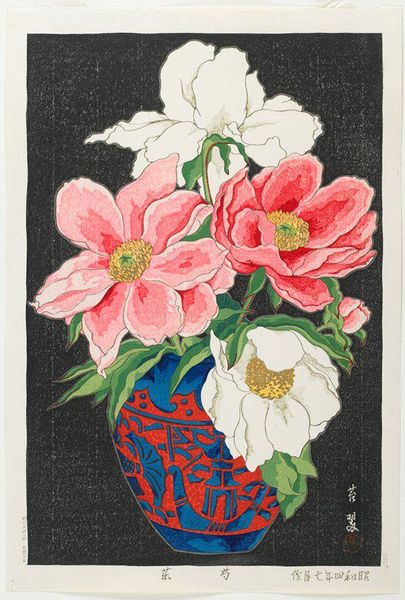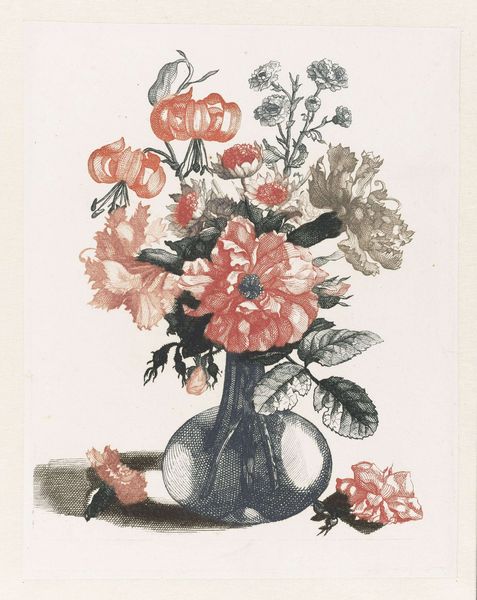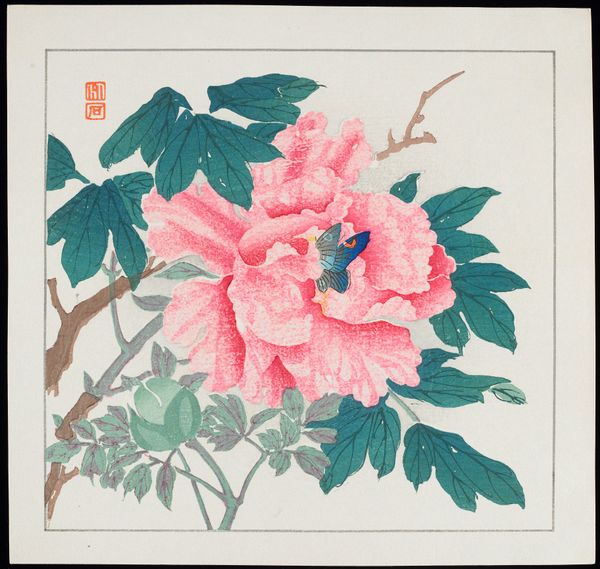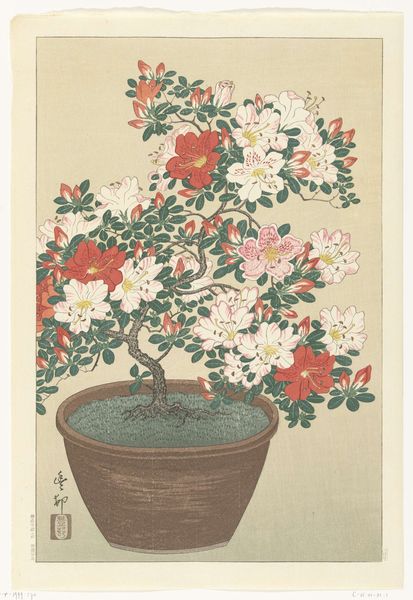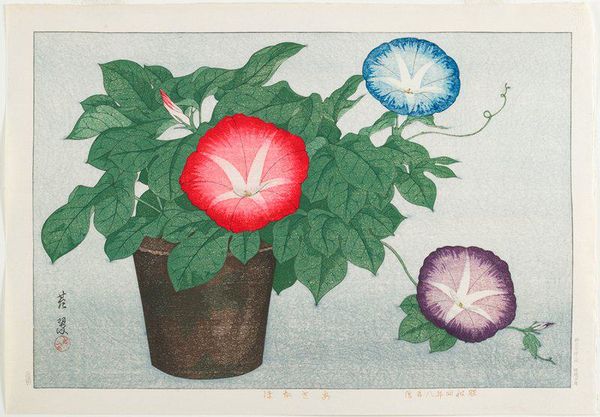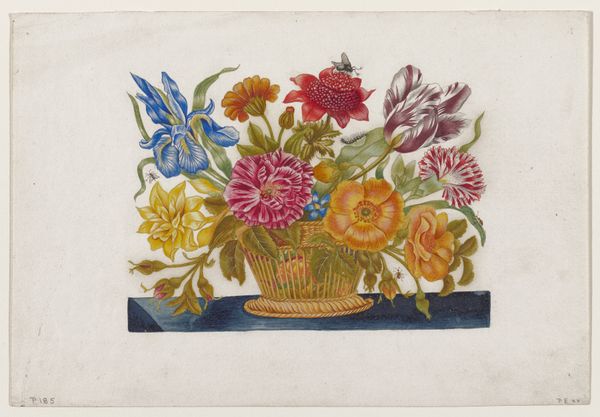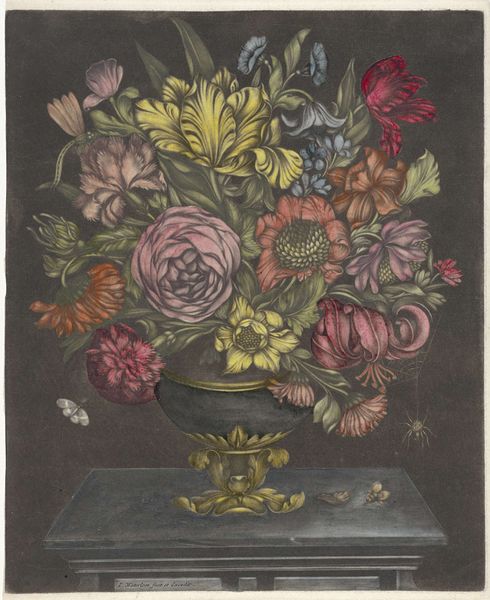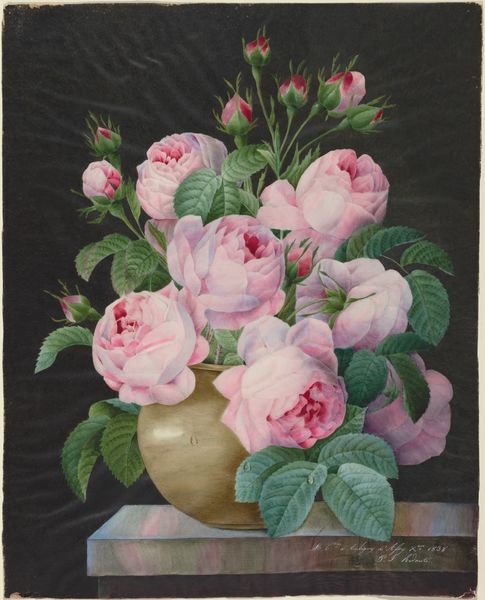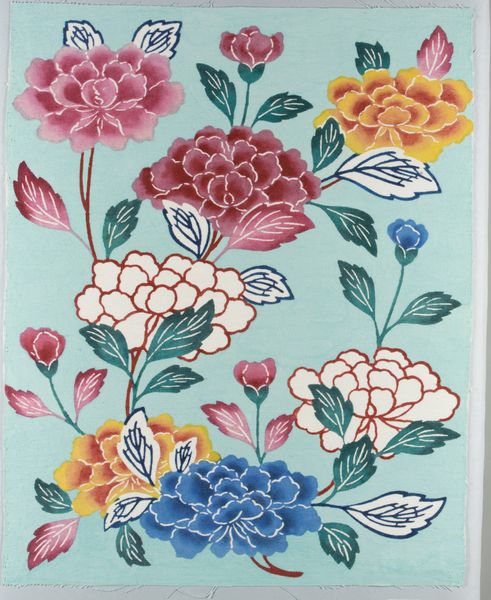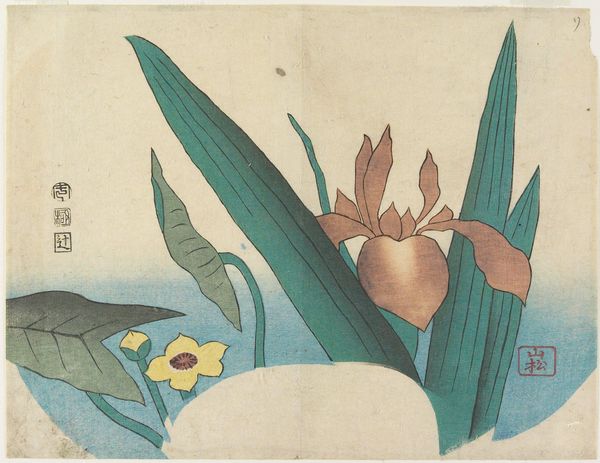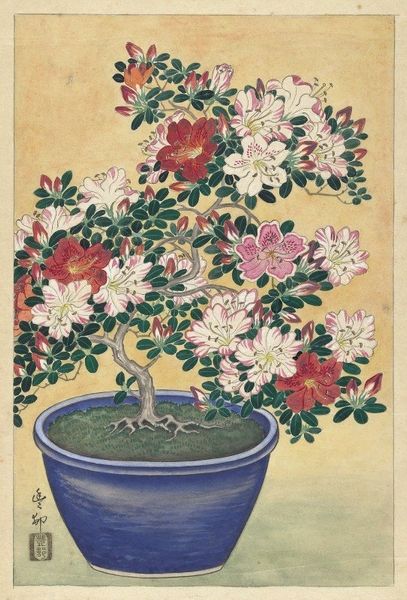
Dimensions: 10 7/8 x 15 3/4 in. (27.6 x 40 cm) (sheet)
Copyright: No Copyright - United States
Editor: Inuzuka Taisui’s "Dahlias," a woodblock print from 1929 at the Minneapolis Institute of Art, is unexpectedly charming. There's something quite direct and almost folksy about it. The dahlias themselves are beautiful, of course. What are your first thoughts when you see this piece? Curator: My initial reaction goes beyond just aesthetic appreciation. Considering the socio-political context, the early 20th century saw Japan grappling with modernization while also trying to preserve its artistic traditions. Woodblock printing, specifically ukiyo-e and its later Shin-hanga movement, experienced both revival and reinterpretation. Given this setting, how do you see Taisui engaging with these conflicting artistic forces through "Dahlias"? Does it lean more towards traditionalism or does it offer something new? Editor: I can see both, actually. The subject matter—flowers in a vase—feels like a very traditional still life. However, the almost flattened perspective and the bold use of color make it seem a little more modern. Do you think the intended audience had any impact on its style? Curator: Absolutely. These prints, while rooted in tradition, were increasingly geared towards a Western audience interested in Japonism and exotic views of Japanese life. Artists like Taisui were navigating a complex market – producing art that catered to Western tastes, contributing to Orientalism, but also reflecting a genuine, lived experience of Japanese aesthetics. What do you think, does it succeed in navigating those complex cultural currents? Editor: That’s a fascinating perspective. I hadn't considered how the piece might be 'performing' Japan for an outside audience. Now that you mention it, I see a definite leaning into what might be considered traditionally "Japanese" motifs, even while employing what might also be considered modern techniques in printmaking. Curator: Exactly! Thinking about this, what strikes me is the delicate balance achieved in presenting a cultural identity in a time of flux. A powerful dialogue between the artist, their culture, and the global stage. Editor: This has completely shifted how I see it! It's much more than just a pretty floral arrangement. It's a window into a complex cultural moment.
Comments
No comments
Be the first to comment and join the conversation on the ultimate creative platform.

